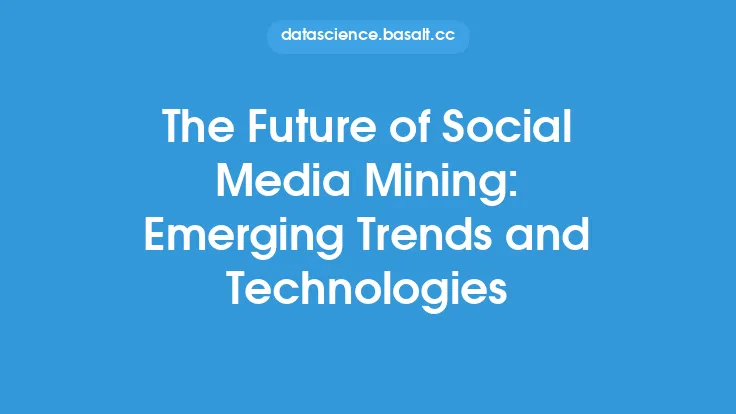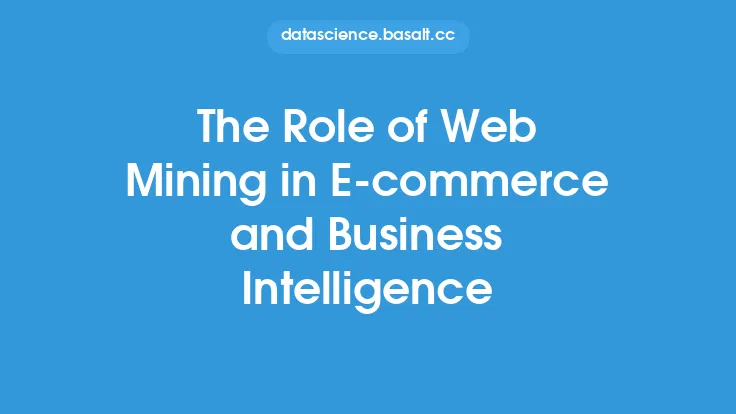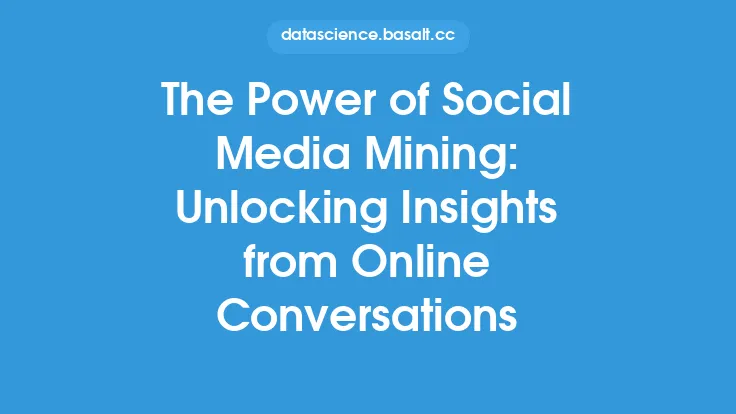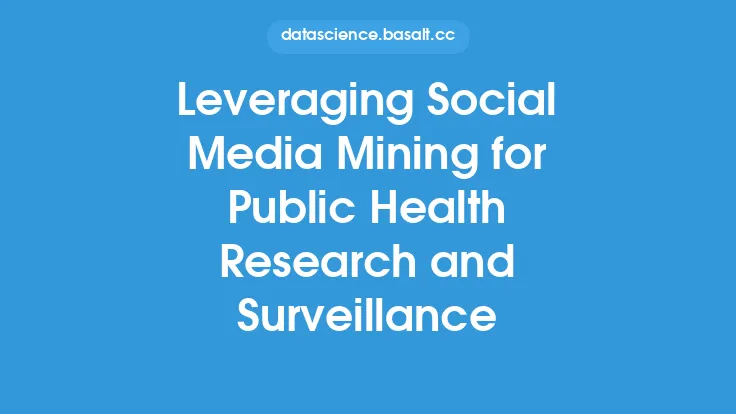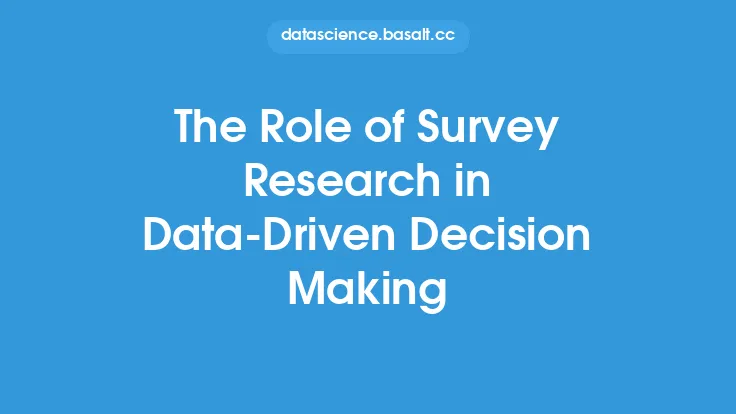The advent of social media has revolutionized the way people interact, share information, and express their opinions. This has led to an explosion of user-generated content, which can be leveraged to gain valuable insights into consumer behavior, preferences, and trends. Social media mining, a subset of data mining, involves the application of various techniques to extract, analyze, and interpret large amounts of social media data. In the context of market research and trend forecasting, social media mining plays a vital role in helping businesses and organizations make informed decisions.
Introduction to Social Media Mining
Social media mining involves the use of various techniques, including natural language processing (NLP), machine learning, and data visualization, to analyze and extract insights from social media data. This data can come from various sources, including social media platforms, online forums, and blogs. The goal of social media mining is to identify patterns, trends, and correlations within the data, which can be used to inform business strategies, predict market trends, and identify potential opportunities and risks.
Data Collection and Preprocessing
The first step in social media mining is data collection, which involves gathering social media data from various sources. This can be done using web scraping techniques, APIs, or social media listening tools. Once the data is collected, it needs to be preprocessed to remove noise, handle missing values, and transform the data into a suitable format for analysis. This can involve techniques such as tokenization, stemming, and lemmatization, which are used to normalize the text data and reduce its dimensionality.
Text Analysis and Sentiment Analysis
Text analysis is a critical component of social media mining, as it involves the use of NLP techniques to extract insights from unstructured text data. This can include techniques such as sentiment analysis, which involves analyzing the emotional tone of the text to determine whether it is positive, negative, or neutral. Sentiment analysis can be used to gauge consumer sentiment towards a particular brand, product, or service, and can be used to identify areas for improvement.
Topic Modeling and Trend Analysis
Topic modeling is another technique used in social media mining, which involves the use of machine learning algorithms to identify underlying themes and topics within the data. This can be used to identify trends and patterns in consumer behavior, and can be used to forecast future trends. Trend analysis involves the use of statistical techniques to identify patterns and correlations within the data, and can be used to predict future trends and identify potential opportunities and risks.
Network Analysis and Influencer Identification
Network analysis is a technique used in social media mining, which involves the use of graph theory to analyze the relationships between individuals and groups within the social media landscape. This can be used to identify influencers, who are individuals or groups that have a significant following and can shape public opinion. Influencer identification can be used to inform marketing strategies, and can be used to identify potential partners and collaborators.
Predictive Modeling and Forecasting
Predictive modeling is a technique used in social media mining, which involves the use of machine learning algorithms to forecast future trends and patterns. This can be used to predict consumer behavior, and can be used to identify potential opportunities and risks. Predictive modeling can be used to inform business strategies, and can be used to optimize marketing campaigns and improve their effectiveness.
Challenges and Limitations
While social media mining offers a wealth of opportunities for market research and trend forecasting, there are also several challenges and limitations that need to be considered. One of the main challenges is the sheer volume of social media data, which can be difficult to collect, process, and analyze. Another challenge is the noise and bias that can be present in the data, which can affect the accuracy and reliability of the insights. Additionally, social media mining raises several ethical concerns, including privacy and data protection, which need to be carefully considered.
Best Practices and Future Directions
To get the most out of social media mining, it is essential to follow best practices, including ensuring the quality and accuracy of the data, using appropriate analytical techniques, and considering the ethical implications of the research. Future directions for social media mining include the use of emerging technologies, such as deep learning and artificial intelligence, to improve the accuracy and effectiveness of the insights. Additionally, there is a growing need for social media mining to be integrated with other forms of data, such as customer feedback and transactional data, to provide a more comprehensive understanding of consumer behavior and preferences.
Conclusion
Social media mining is a powerful tool for market research and trend forecasting, offering a wealth of opportunities for businesses and organizations to gain valuable insights into consumer behavior and preferences. By leveraging various techniques, including text analysis, sentiment analysis, topic modeling, and predictive modeling, social media mining can be used to inform business strategies, predict market trends, and identify potential opportunities and risks. While there are several challenges and limitations that need to be considered, social media mining has the potential to revolutionize the way businesses and organizations approach market research and trend forecasting, and is an essential tool for any organization looking to stay ahead of the curve in today's fast-paced and rapidly changing business landscape.
